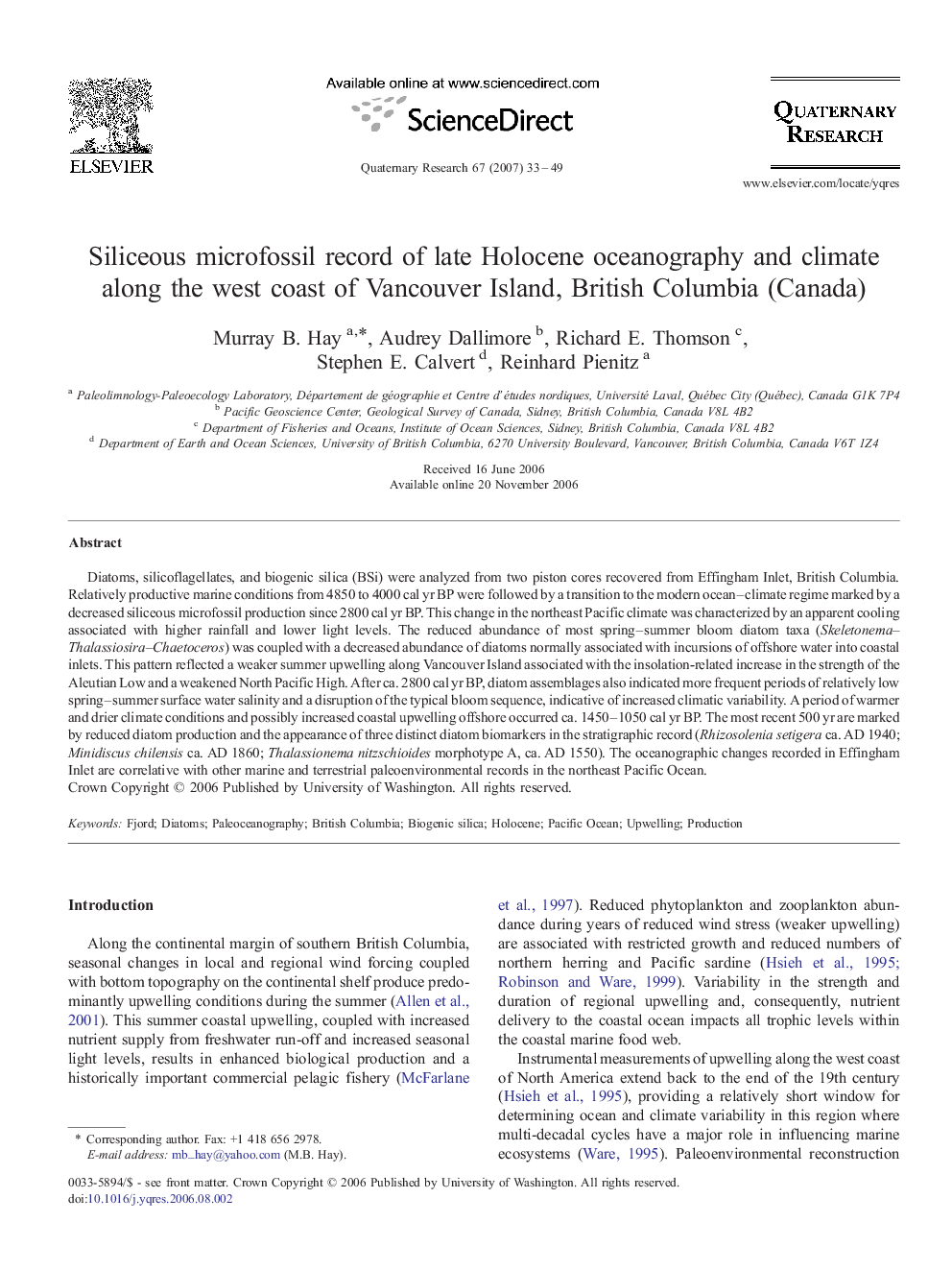| Article ID | Journal | Published Year | Pages | File Type |
|---|---|---|---|---|
| 1045628 | Quaternary Research | 2007 | 17 Pages |
Abstract
Diatoms, silicoflagellates, and biogenic silica (BSi) were analyzed from two piston cores recovered from Effingham Inlet, British Columbia. Relatively productive marine conditions from 4850 to 4000 cal yr BP were followed by a transition to the modern ocean-climate regime marked by a decreased siliceous microfossil production since 2800 cal yr BP. This change in the northeast Pacific climate was characterized by an apparent cooling associated with higher rainfall and lower light levels. The reduced abundance of most spring-summer bloom diatom taxa (Skeletonema-Thalassiosira-Chaetoceros) was coupled with a decreased abundance of diatoms normally associated with incursions of offshore water into coastal inlets. This pattern reflected a weaker summer upwelling along Vancouver Island associated with the insolation-related increase in the strength of the Aleutian Low and a weakened North Pacific High. After ca. 2800 cal yr BP, diatom assemblages also indicated more frequent periods of relatively low spring-summer surface water salinity and a disruption of the typical bloom sequence, indicative of increased climatic variability. A period of warmer and drier climate conditions and possibly increased coastal upwelling offshore occurred ca. 1450-1050 cal yr BP. The most recent 500 yr are marked by reduced diatom production and the appearance of three distinct diatom biomarkers in the stratigraphic record (Rhizosolenia setigera ca. AD 1940; Minidiscus chilensis ca. AD 1860; Thalassionema nitzschioides morphotype A, ca. AD 1550). The oceanographic changes recorded in Effingham Inlet are correlative with other marine and terrestrial paleoenvironmental records in the northeast Pacific Ocean.
Keywords
Related Topics
Physical Sciences and Engineering
Earth and Planetary Sciences
Geology
Authors
Murray B. Hay, Audrey Dallimore, Richard E. Thomson, Stephen E. Calvert, Reinhard Pienitz,
